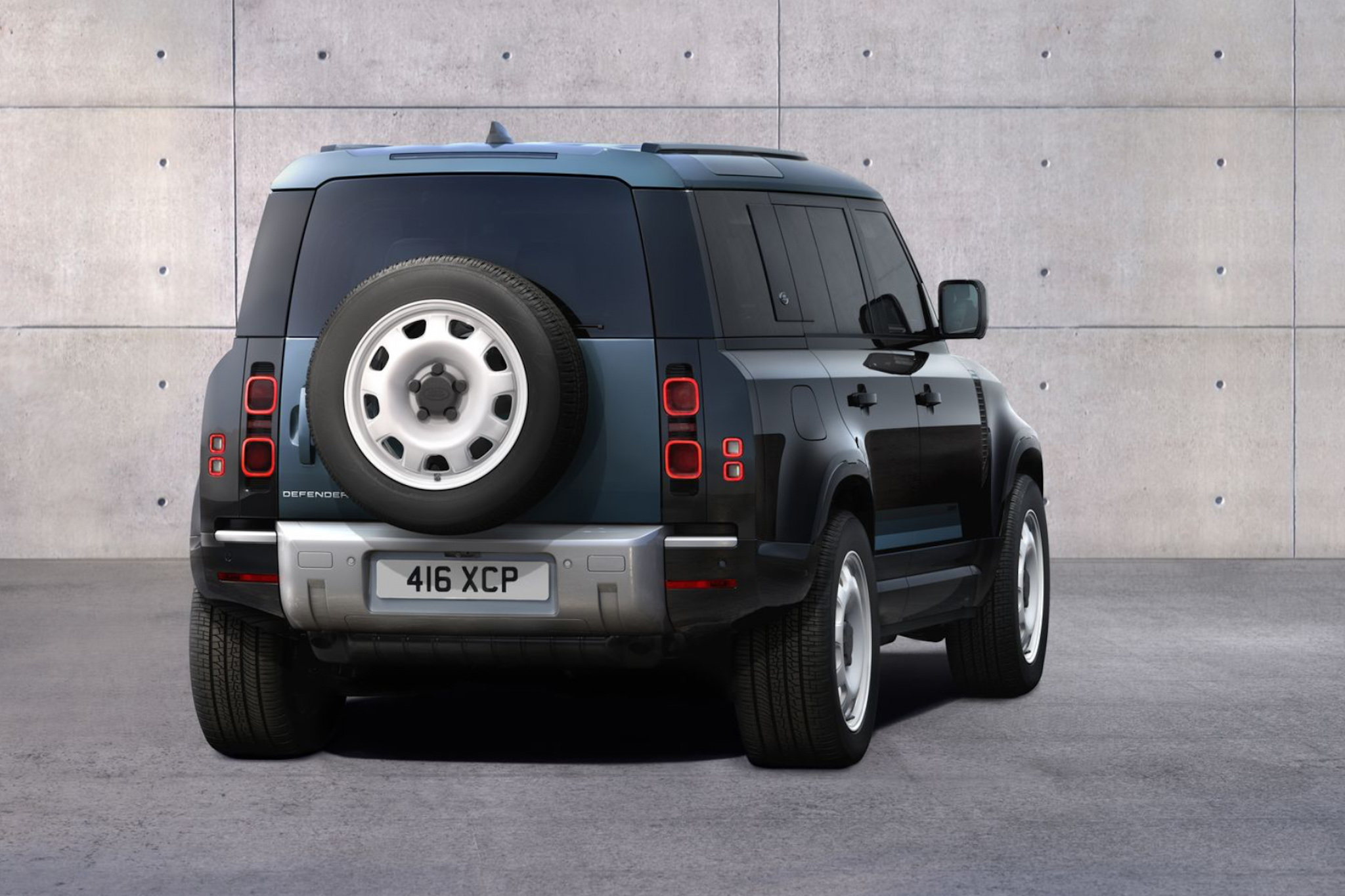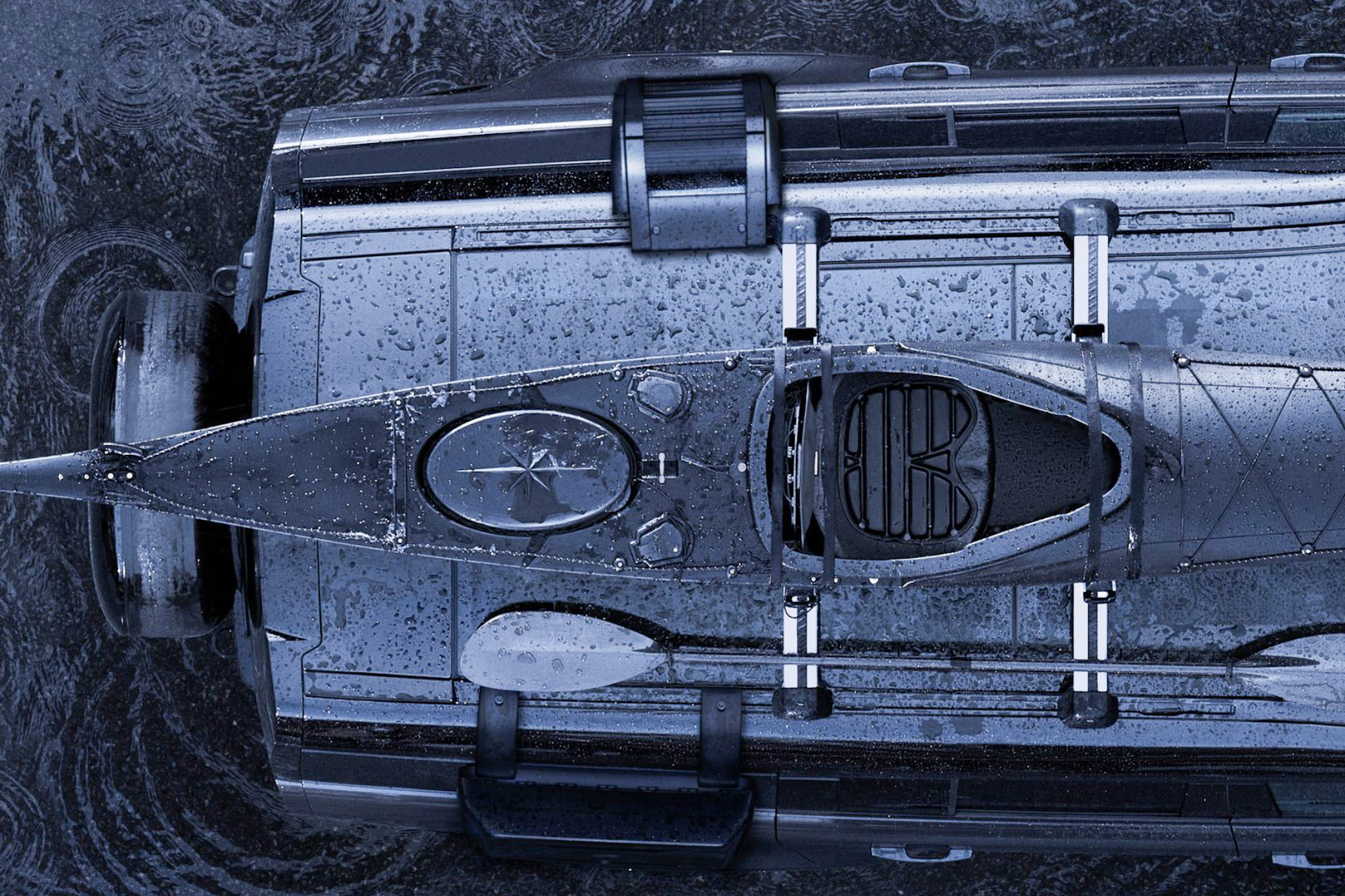Land Rovers helped form the origins of my own overland history, the Camel Trophy leaving me wide-eyed as a 19-year-old multi-sport athlete, transfixed by muddy Defenders teetering on lashed logs over a imposing chasm. I have owned more Land Rovers than any other marque, including my current classic Defender 110 diesel. My love for the brand runs deep, and it is so encouraging to see the continued emphasis on producing off-highway capable overland vehicles. This latest crop of Defenders is the most significant evidence in recent years of their commitment to the legacy of the brand, and to the overland traveler.
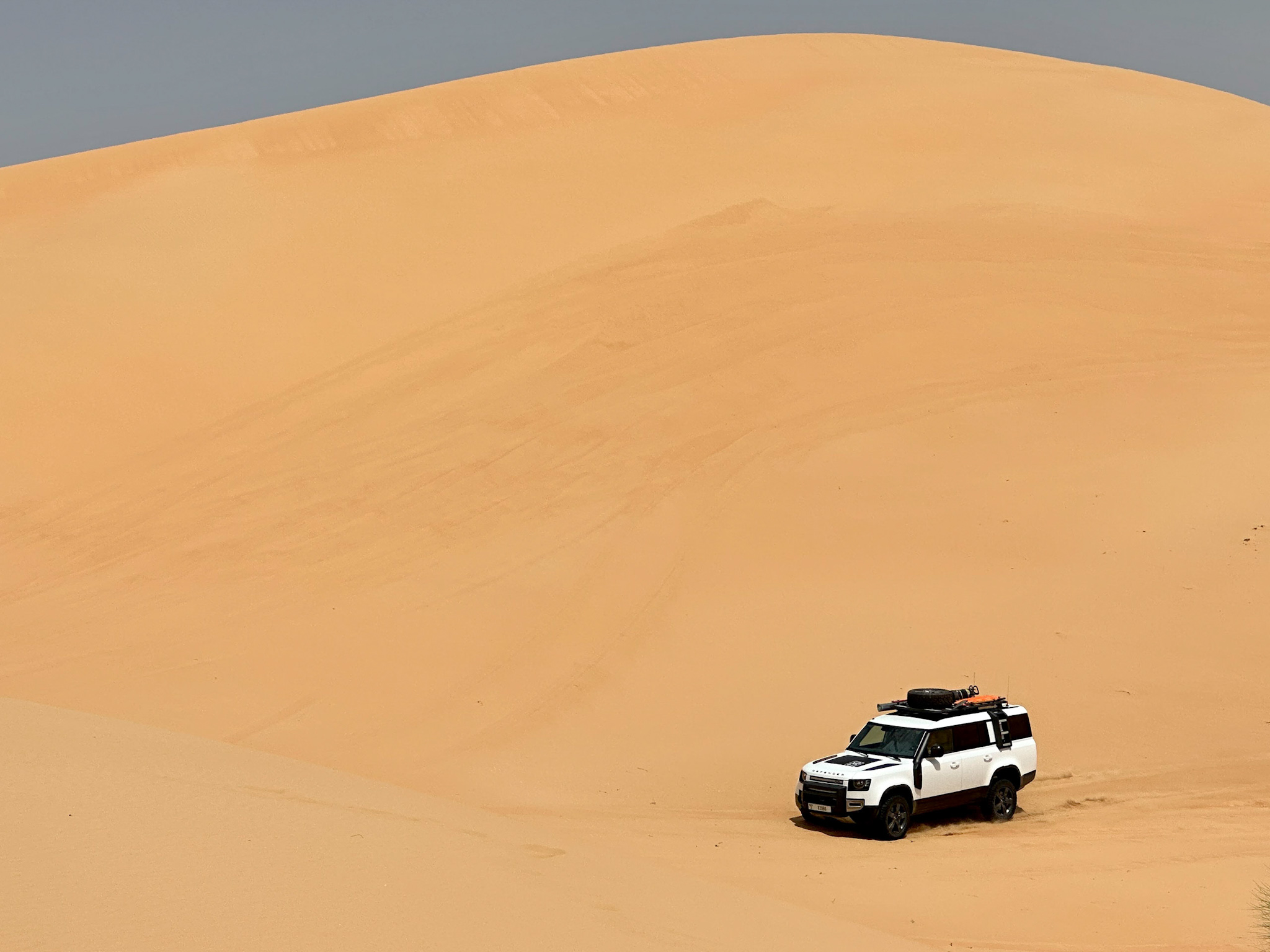
My recent travels with the Defender 130 across the Arabian Sea of the UAE included days of dune and trail driving, along with hours of road travel.
Before we even delve into the new models, we need to talk Defender 130 in general. I have spent a lot of time in this model, traveling throughout the southeast of the United States in one, and then across the Arabian desert in the United Arab Emirates. Without question, the 130 is my favorite of the modern Land Rovers, offering the optimal confluence of capacity (payload and load space), capability, and comfort. The 130 retains the same wheelbase of the 110 at 119 inches, but adds 13 inches of additional load space aft of the rear axle. This does several important things, including ease of sleeping in the vehicle, additional storage capacity (keeping weight off the roof), and better overall weight balance. The weight balance improvement was most evident in extreme terrain, the 130 articulating more effectively (because of the addition aft weight), and being less likely to pop the rear skyward during a wheel lift. The 130 is just more settled and composed than the 110, and the 110 was already really good.

My mud and rut trail testing of the Defender 130 in North Carolina
Certainly, the 130 also has a few compromises over the 110, like a reduced departure angle to 28 degrees. It is easy to see that as a con, but 28 degrees is still better than a Land Cruiser 200 (24 degrees) and 4Runner (26 degrees). For my uses, the additional space is so worth the reduced departure. In my experience, the most significant compromise is the 20″ wheels, as you cannot get the 18″ factory steel wheels on the 130 due to brake size. But even this compromise can be mitigated if the owner is willing to go aftermarket, as there is a solution from Lucky8 that allows the fitment of an 18″ wheel with the P300 and P400 motors.
The new Defender 130 is exceptional as a travel vehicle, providing capability that few in the segment can match, combining a class-leading 1,830 pound payload (5-seat, 6-cylinder) with an unmatched 370 pound dynamic roof load rating. There is up to 88.5 cubic feet of storage behind the first row, and over 80 inches of length for sleeping on a flat load flood (5-seat). If you like to tow, the 130 can drag 8,200 pounds of boat, camper, or car-hauler behind it.
Land Rover Defender 130 Outbound Model

Land Rover is also doubling down on the Defender in North America, buoyed by strong sales across all markets, that success is resulting in even more desirable models for the overlander. The most notable is the new Outbound 130 model, which is delivered as only a 5-passenger to maximize payload and interior storage volumes. The package comes standard with the P400 mild-hybrid motor and heavy-duty rubber floor and load mats throughout. You can even get it in white, and it is ready to travel around the world.

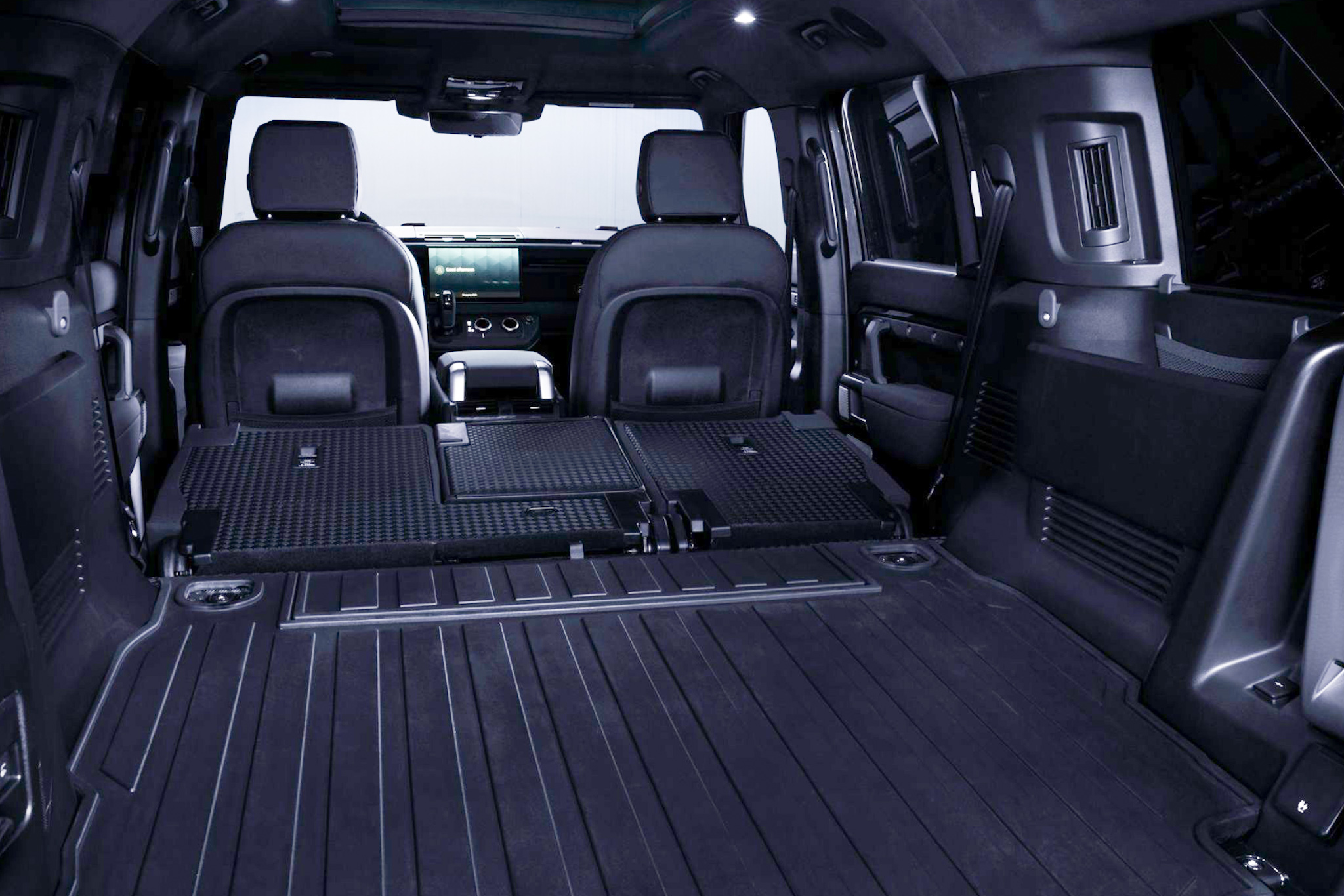
Outbound 130 Key Specifications:
- 5-seat Configuration to Maximize Capacity
- Payload of 1,800 pounds
- 88.5 cubic feet of storage area
- Near-flat load floor
- 370 pound dynamic roof load capacity
- Straight 6 gasoline hybrid with 406 lb-ft of torque
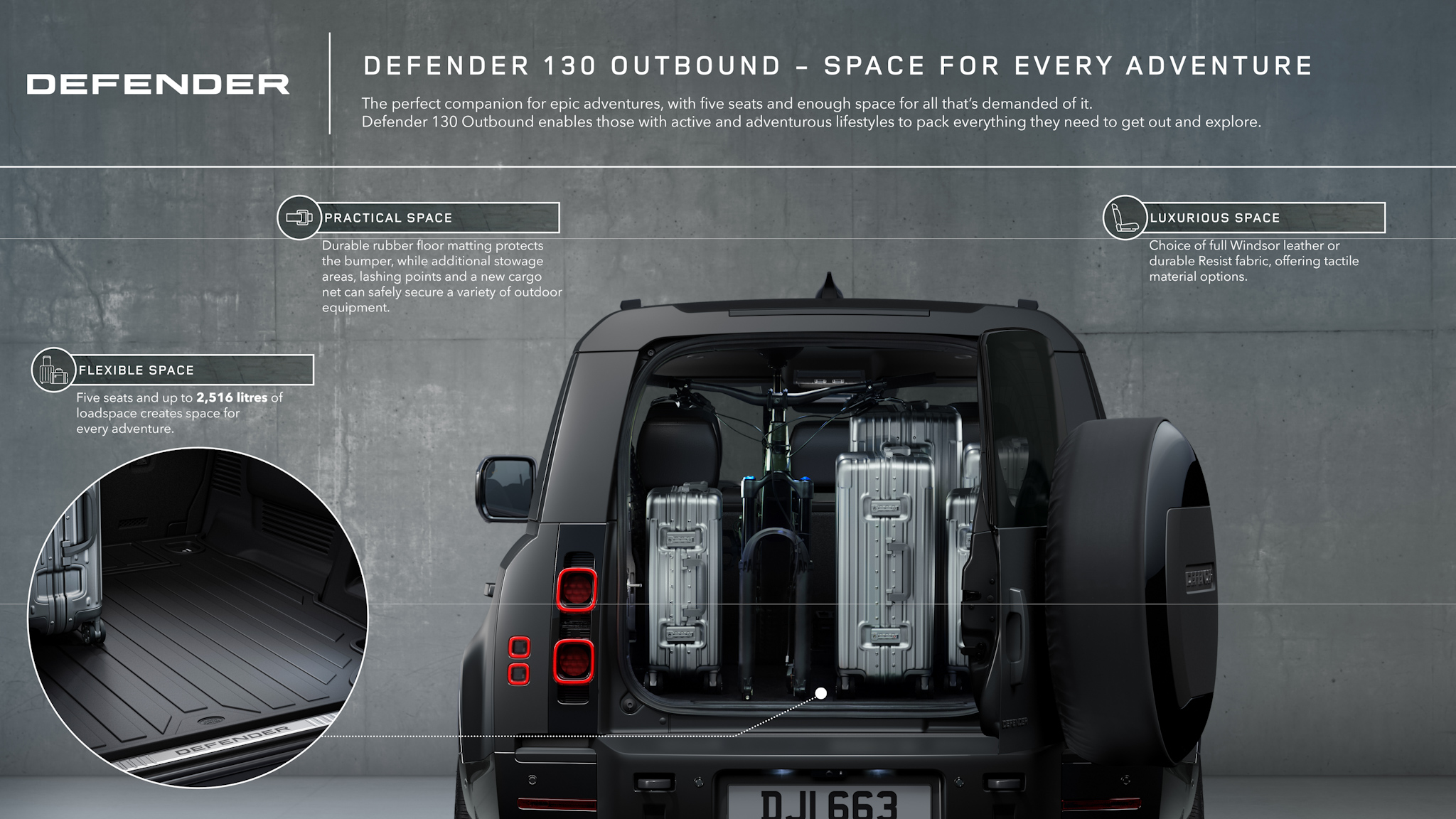

Land Rover Defender 130 V8 Model
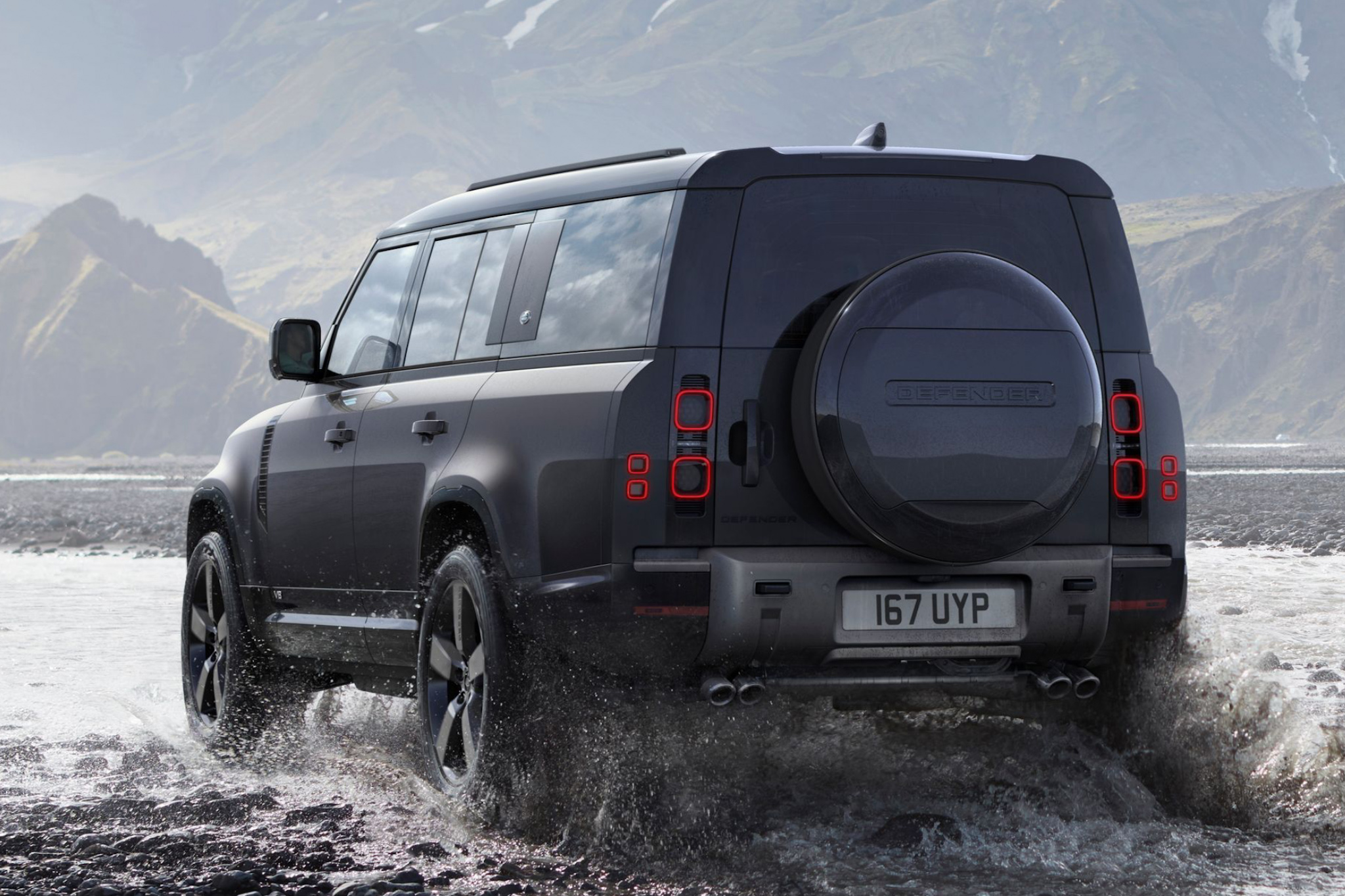
The 130 V8 is a beast, with power to spare.
One of the most exciting new announcements with the Defender 130 is the addition of the V8 motor, a supercharged 5.0 liter with nearly 500 horsepower and a 0-60 in 5.4 seconds. I drove this model in Dubai, and was impressed by the authority is vaulted the 5,800 pound model to legal’ish speeds. The exhaust note is more tempered than the D90 V8, and the motor feels entirely appropriate to the platform. This motor will be ideal for those living at elevation, towing heavy loads, or just looking for thrilling acceleration. There are two important compromises to note on the V8 model, which is a zero (yes, zero) pound roof load rating, and 20 or 22 inch wheels only. There is no aftermarket help on this one. Realistically, neither of these limitations are even in consideration for the V8 buyer, as it is a different use case than the backcountry traveler, but they are important to note.

Above is the V8 Defender 130 that I drove in Dubai, complete with their full accessory package.
Defender 130 V8 Key Specifications:
- 5.0 liter Supercharged Gasoline V8
- 493 Horsepower
- 461 Lb-Ft of Torque
- 0-60 in 5.4 seconds
- 149 mph top speed (yeeeeow!)
- 8,200 Lb. Towing Capacity
Defender 110 County Trim Package

The County model is a nice touch to the 110
The Defender 110 is getting some attention too, with one of the classic Land Rover trim levels, The County. The County badge was launched in the classic Defender decades ago as a premium outdoors person package, often including upgraded seats, racks, and other options that supported the vehicle’s use by the recreationist. The package was later launched on other models like the Range Rover Classic, but its roots are in the Defender, and is new available in the current model.
The County package adds a few unique color combinations, like the (in my view) handsome Fuji White body with new Tasman Blue contrast roof and tailgate. The package also includes unique graphics, interior details, and even a white wheel option.
Defender has proven to be a resounding success globally, with sales far exceeding the classic Defender volumes. It has appealed to so many consumers with a wide range of needs, which all speaks to the broad range of capability engineered into the lineup. For me, it would be a 5-passenger Defender 130 with a swap to 18″ wheels and slightly larger AT tires. I would lash a few bags into the load area, build out a sleeping platform, fill the tank, and start driving south- the Atacama is nice this time of year.
landrover.com | Pricing varies by trim
Read More:
Land Rover Introduces the Defender Octa
Our No Compromise Clause: We carefully screen all contributors to ensure they are independent and impartial. We never have and never will accept advertorial, and we do not allow advertising to influence our product or destination reviews.
